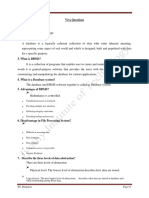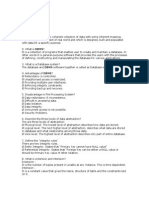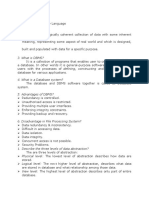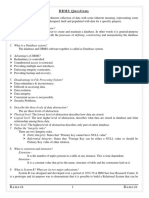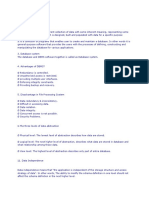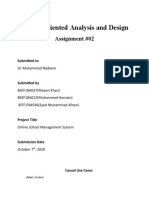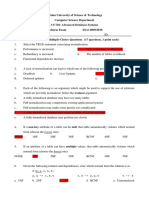0% found this document useful (0 votes)
50 views6 pagesDBMS Lab VIVA Questions
This document provides a comprehensive set of questions and answers related to Database Management Systems (DBMS) for a lab course. It covers fundamental concepts such as databases, DBMS, data abstraction levels, integrity rules, normalization, and SQL, along with practical aspects like triggers and transaction management. The content serves as a study guide for students in the 4th semester of their BCS403 course.
Uploaded by
skroy.totoCopyright
© © All Rights Reserved
We take content rights seriously. If you suspect this is your content, claim it here.
Available Formats
Download as PDF, TXT or read online on Scribd
0% found this document useful (0 votes)
50 views6 pagesDBMS Lab VIVA Questions
This document provides a comprehensive set of questions and answers related to Database Management Systems (DBMS) for a lab course. It covers fundamental concepts such as databases, DBMS, data abstraction levels, integrity rules, normalization, and SQL, along with practical aspects like triggers and transaction management. The content serves as a study guide for students in the 4th semester of their BCS403 course.
Uploaded by
skroy.totoCopyright
© © All Rights Reserved
We take content rights seriously. If you suspect this is your content, claim it here.
Available Formats
Download as PDF, TXT or read online on Scribd
/ 6








